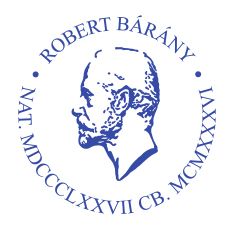The following guidelines have been updated in February 2024.
Every subcommittee will have a chair designated by the Classification Oversight Committee of the Bárány Society (COSC-BS). The chair of a subcommittee should be a member of the Bárány Society and report to the COSC-BS. He/she will compose his/her own subcommittee group according to the following guidelines:
No more than 12 months should elapse from the designation of the coordinator to presentation of first proposal to the COSC-BS. Each paper will undergo an internal review and consensus process for ICVD Publications in the Journal of Vestibular Research (JVR).
The work of the various subcommittees will be submitted for publication to JVR after the final approval by the COSC-BS. Membership of the subcommittee does not automatically qualify for authorship. The subcommittee chair will decide whose input was sufficient to qualify for authorship; all other subcommittee members will be listed in an acknowledgement.
The chair of the subcommittee will be listed as the first author and another member, depending on the senior role played in the subcommittee, listed as last author; all other authors are listed according to alphabetical order and the list will include the addendum “on behalf of the COSC-BS.”
After publication of its definition, the subcommittee is dissolved. The revision and possible updating of the definition will be done according to the same procedure as described above. All members of the previous subcommittee are eligible for the revision subcommittee.
To establish the definitions all available types of evidence should be taken into account: clinical description, pathophysiology, vestibular tests, imaging, treatment results, genetics, epidemiology, etc. and should retain what is essential for the disease definition.
Currently, the following vestibular disorders and topics are addressed in subcommittees:
A series of consensus documents is finished or currently under development by the Committee for the Classification of Vestibular Disorders (ICVD) of the Bárány Society. To see a list of these documents, please click here.
As mentioned above, all finalized documents of the COSC-BS are published open access in the Journal of Vestibular Research.
For information regarding the ICVD process, contact Alexander Bisdorff, Chair of the Classification Oversight Committee of the Bárány Society: Alexbis@pt.lu.

Copyright © 2024 Bárány Society All Rights Reserved.
Secretariat: Marianne Bergstrom — Department of Otorhinolaryngology — Head & Neck Surgery
University Hospital (Akademiska Sjukhuset) SE-751 85 Uppsala, Sweden — Phone +46 18 617 60 43 — E-mail marianne.bergstrom@akademiska.se
HTML Sitemap — XML Sitemap — Cookies — Privacy Policy — Site by Technique
